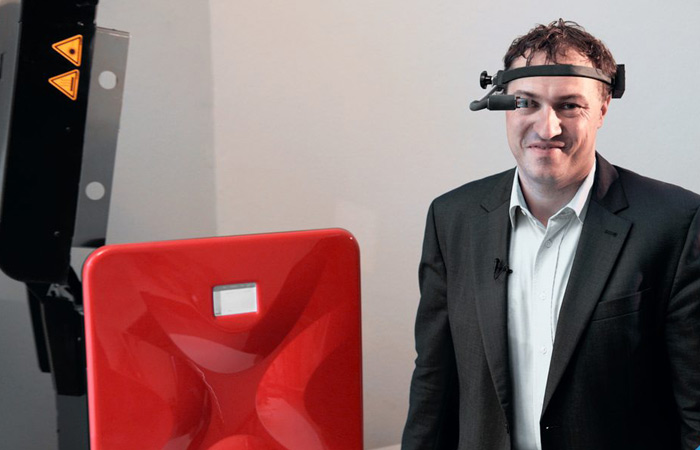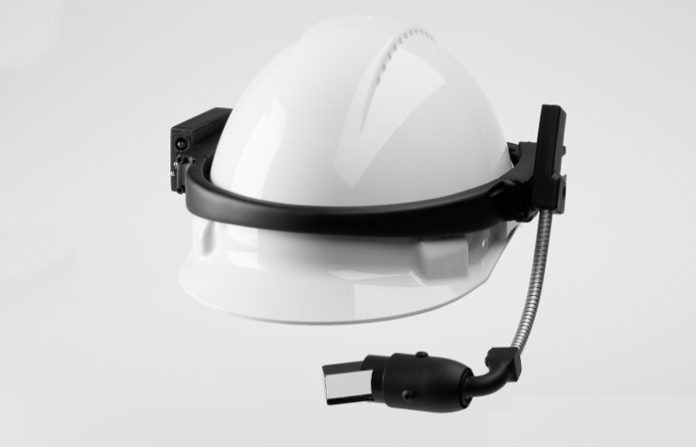New technologies are the field where evolution and changes are the most noticeable. And such are the 3D systems of augmented reality – the devices are constantly upgraded to guarantee the highest image quality. The combination of virtual 3D reality and non-virtual reality is the result of collaboration of Sinterit and Professor Rigo Herold – a German researcher working on developing AR technology as well as on the design of data glasses. Glasses printed in SLS 3D technology allow for precise assembly of components and maximum comfort of using the equipment.
Augmented Reality (AR) is a technology that connects the real world, most commonly recorded by camera lenses, with 3D imaging. History of AR dates back to 1968, but it was the 21st century that brought considerable progress in the development of AR. With the ability to interact in real time and freedom of movement in three dimensions, this technology is often used in entertainment, but also in medicine, aviation and automotive industries. The Augmented Reality also can be used in other fields of industry, to improve tools and machines, and to increase their efficiency.
Augmented Reality with SLS Printer
Augmented Reality enriches the real world with additional, contextual information. Such solutions have been used for many years in industrial applications. Thanks to the AR technology AR users working on complex systems can thoroughly review the complex components of individual tools or take a closer look at the given stage of the manufacturing process. In the case of complicated manual work, the data glasses to keep the hands free and use the updated information that appears in your glasses (e.g. sudden jumps or drops in temperature or pressure) to respond to them in time. The device can also detect airborne contaminants, display relevant parameters of the environment, and suggest appropriate reactions.
Data glasses are not a new invention – for years large, heavy, covering most of the face models have been used. However, the standard size of the eyepiece does not always work in the industry. Working in hard conditions requires engineers to wear appropriate clothing – a protective suit and a helmet with a mask to protect face from the external factors. The advantages of using AR technology in the industry and the need to combine the data glasses and a special helmet inclined Professor Rigo Herold to look for an alternative rims for electronic eyepieces.
The requirements were high – the rims had to be lightweight but quite precise, to be able to set all the necessary elements in. Resistance to high temperatures and durability, were also important factors, especially in the case of people exposed to harmful substances. From the outset 3D printing seemed to be the best solution, but choosing the right technology required a lot of testing.

Laser Powder Sintering
– Data glasses are composed of complex, precisely positioned optical components – among others sensors and mirrors. To ensure uninterrupted sharpness of the virtual image, all optical components must be set in with the highest precision. The filaments used in the early data glasses printed in 3D technology were not accurate enough, says Professor Herold.
It turned out that the optimum parameters are guaranteed by SLS 3D printing (laser powder sintering). Originally, Rigo Herold used a service provider to print the ordered parts. However, the use of such services unnecessarily lengthened the process of project implementation. The solution to this problem, both for practical and economic reasons, was the Sinterit Lisa desktop printer. The equipment capabilities have been confirmed by the quality of SLS prints (their durability, precision, and resistance to external factors), and have allowed full freedom of creation. Elements that did not need additional assembly, printed without support structures, worked out in the production of “smart glasses”.
Due to the industrial purpose of the data glasses, it was also very important to be able to print on Lisa printer both short series of identical, small products and tailored-made items for future users. The capabilities offered by SLS made it possible to design a device that can be directly mounted on a helmet or separately adjusted to be used simultaneously with other necessary equipment. The SLS technology which guarantees full freedom of creation worked out perfectly in the case of such diversity of demand for individual modules.
Data glasses printed with SLS Sinterit Lisa printers have a number of additional benefits that make them much more convenient; and practical than using the well-known large AR goggles. Extremely important for the industrial version of the eyewear is the shock resistance and flexibility; in combination with many of the protective components (glasses/mask, helmet and sound-isolating earphones).
Smart Glasses For Deaf People
The lightness of the material used for print guarantees comfort; not only for those who intend to use glasses for advanced work in factories. Data glasses printed with Lisa printer are also suitable for use by deaf people. When using the glasses in the cinema they can watch movies (even in their native language); with specially prepared and visible only within AR technology subtitles. Apps related to the augmented reality are also increasingly used in; tourism (enriching walks in museums or city streets) or in entertainment; reaching a very wide audience – as the global hit of last year – Pokemon Go game.
Printing the glasses on the desktop printer brought the possibility of their fast production, also on individual orders. Such projects prove that it is worth looking for new solutions and implementing them in the immediate surrounding. It is possible with the help of small desktop devices such as Sinterit. Transferring professional industrial printing onto a desk shortens the distance between the designer and the production; so that all processes have a chance to run even faster.
Now, when Sinterit is offering its ready-to-use SLS 3D printer; (fitting even average desktops) at the best price on the market; it’s worth considering to move the entire project together with prototyping and production to companies. Accelerating development through the direct realization of ideas guarantees the success. Just think what else you can print and, as if using the data glasses, further expand your reality.
